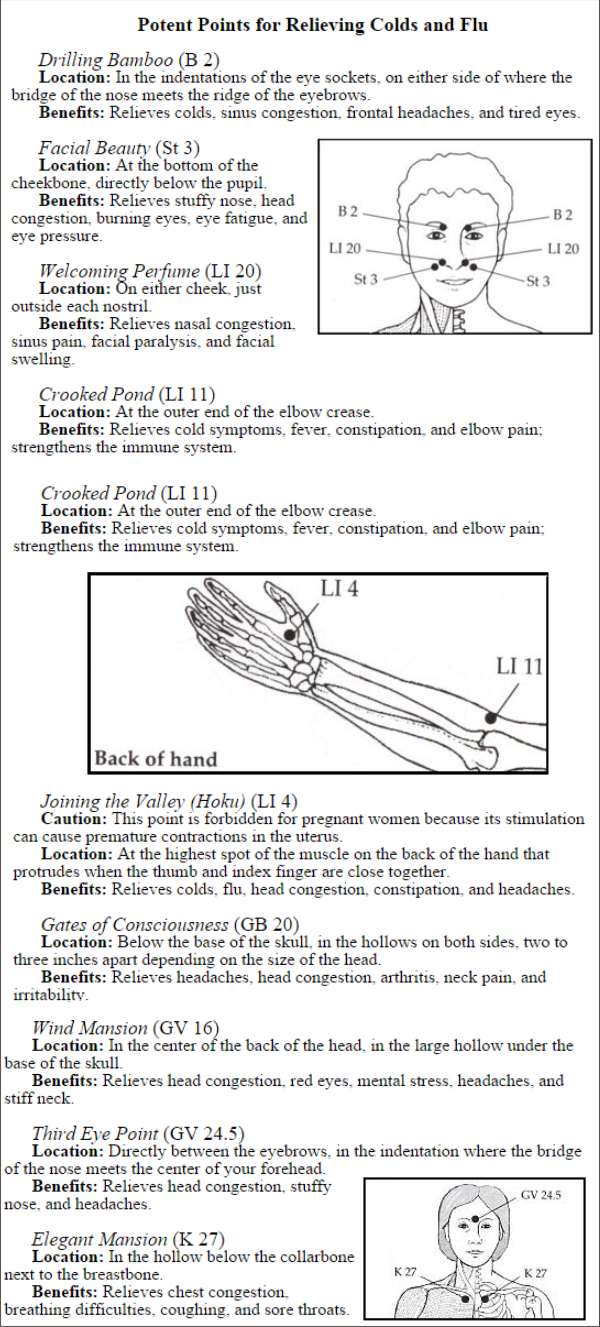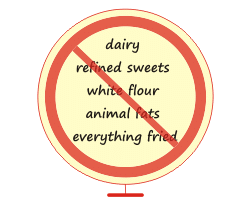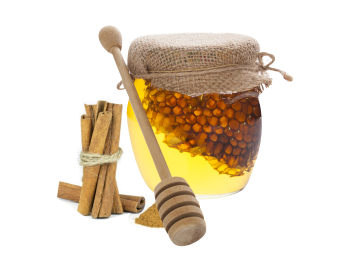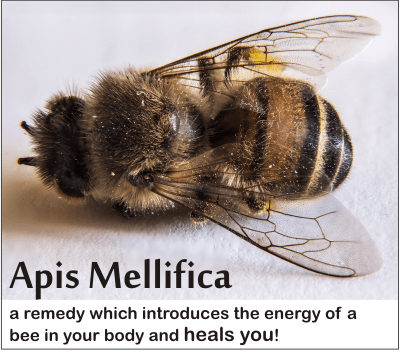Part 3 of “the best natural remedies for colds” comes with 4 other ways of combating colds. Try drinking some magic syrups, use acupressure, take supplements like Vit C or Zink or Echinacea or some homeopathic remedies.
But do they work? Do we have proofs for this? How many of them are merely fairy tales? Let’s find out.
16. Make some magic potions for your sore throat and tonsils.
Black radish syrup.

Do you know that black radish is also called “black magic”? It is black and it does magic: it’s antimicrobial and antibacterial, contains nutrients and powerful antioxidants. It is used to detoxify the body, cures colds and tonsillitis, maintains blood pressure levels, and so many you can read here in Black radish – the black magic! The best good-intended black magic ever!
To treat sore throats and respiratory problems take one medium black radish and make a hole inside, like a cave, at the end the leaves were.
Fill it with honey (even sugar if you ran out of honey.) Then put the radish in a glass and the glass over a mild source of heat, like a radiator if it’s winter, over your oven, or a boll full of hot water. ( I put it on my aquarium, because the light neon also heats the cover of the aquarium and it provides a mild source of heat. see picture)
The honey will capture the good stuff of the radish in it. The honey will turn into a liquid that will seep into the radish and get out of it through the other end, into the glass. We should eat that liquid, a teaspoon every half an hour. And we can also drink the liquid left inside the radish, after 3 or 4 hours. But it is as its best after one night.
I also did more liquid in a more nowadays method, and not following grandma’s recipe: just cut the radish into very small pieces, cover them with honey and voila! The desired magic potion. I don’t know if it is the same, but it tastes the same.
And believe me, IT WORKS. And works IMMEDIATELY. It is an absolutely amazing vegetable that is more MEDICINE than food.
I was coughing like hell, took one spoon of black radish syrup, stopped coughing for 20 minutes, than cough again eliminating a lot of phlegm and than quiet for 3 hours. When I coughed again, I took again one spoon of syrup, the same happened. After two days I was not coughing anymore, my sore throat was ok, my mucus gone.
It is a MIRACLE root. More about it in the post Black radish – the black magic!
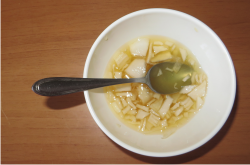
Onion – honey syrup.
Take 2 onions and cut them thin. Cover them in honey and let this mixture for 24 hours, stirring it from time to time. After that strain the liquid – which will not resemble honey anymore, and take one teaspoon every 2 hours. The nasty side effect of it is that it makes you belch. A lot. But helps your throat and cough, and belching doesn’t hurt.
Ginger.
The same type of syrup can be done with ginger, but there are people using it in a more basic way: Take a small piece of ginger and put in on your tongue, at the back side, towards the throat. Try to keep it there for 10 minutes. Do this every one or two hours. It is very good for sore throats and cough.
(One can also find honey and ginger on the market, specially made for this situations.)
Gargling is also very effective for a sore throat, I already mentioned it in The best natural remedies for colds – part 2. We can also use this radish liquid to gargle. Or at least keep it in the mouth and swallow it bit by bit. Don’t drenk or eat after that for at least half an hour.
My doctor says that over-the-counter treatments that can soothe a sore throat, such as lozenges and oral sprays, make a light local anesthesia that calms down the pain. But after this passes away, we are unchanged. So, yes try black magic instead. 🙂
17. Acupressure
I trust Chinese medicine. Acupressure is Used for thousands of years in China, and its roots are in the traditional Chinese medicine. It is acupuncture without needles.
Because acupressure stimulates your body to expel the virus more quickly, it may seem at first that your cold is worsening. But your body is simply progressing through the symptoms faster than usual. Although acupressure cannot cure a cold, working on certain points can help you get better quicker and increase your resistance to future colds.
How is it done?
Use prolonged finger and pressure directly on the point, gradual and steady, for three minutes (ideal). Each point will feel somehow different when pressed; some are tense, others will ache. The pressure should be firm enough so that it “hurts good” – meaning something between pleasant, firm pressure and outright pain. Press harder for more developed muscles. But remember it is not a test of endurance!
Sometimes pressing on a point, will send a pain response in another part of the body. It is is called referred pain and indicates that those areas are related. Press those areas too, so that the blockages are released.
It’s important to apply and release finger pressure gradually, because this allows the tissues time to respond, promoting healing.
After pushing it several times with different degrees of pressure, you will begin to feel a pulse at the point. This pulsation is a good sign – it means that circulation has increased. Pay attention to the type of pulse you feel. If it’s very faint or throbbing, hold the point longer until the pulse balances. The whole acupressure session should last for a maximum of one hour.
A cup of hot herbal tea it is very good after an acupressure session, preferably followed by some deep relaxation. Take a nap if you feel like.
(More reading see Michael Reed Gach’s Acu-Yoga (Tokyo: Japan Publications, 1981), 121-247).
Here are the points to be pressed when healing colds and flu, according to acupressure.com:
18. Take supplements. Myth or truth?
While so many sources mention them as helping with colds conditions, there are still no proves that they do help. I will, nevertheless, help your brain to relax knowing that we do feed the body with vitamins, minerals and superfoods. Healing is piece of cake after that. 🙂
Vitamin C, Zinc, Echinacea, American Ginseng Root, Goldenseal Root, High Lactoferrin Whey Protein.
Vitamin C
Vitamins C works as an antioxidant that helps body tissue grow and heal itself. We can find it in: bell peppers, citrus fruits, kiwifruit, broccoli, strawberries, and tomato juice. It is widely believed to improve general health, speed healing, and fight infection. We can also find it in over-the-counter cold remedies, so this tells us that medics have agreed on something.
BUT
According to the National Institutes of Health, vitamin C is considered possibly effective for treating the common cold, and clearly ineffective for preventing it. They have a lot of studies to back this up. They do warn us about doses over 2000 mg per day, because they can cause kidney stones and diarrhea, and that we should pay attention to the interaction with different medicines.
I always say that the best way to get vitamin C in our bodies, more than usual, is to increase the amount of vegetables and fruits containing it: bell peppers, citrus fruits, kiwifruit, broccoli, strawberries, and tomato juice. Blending or juicing, both are good. Our body will absorb exactly what it needs. It knows better.
The Institute of Medicine recommends that adult males should get 90 milligrams of vitamin C daily in their diet, women get 75 mg daily and children between 15 and 75 mg daily, depending on their age and sex. To promote optimal health, Lawson’s institution recommends taking 400 milligrams of vitamin C per day.
A larger intake of Vit C is considered to be effective in reducing the duration of a cold, not its severity. (according to the American Academy of Nurse Practitioners). As we see in the 2013 review of dozens of studies, vitamin C reduces the duration of colds by 8 percent in adults, and 14 percent in children. If we think that an average cold lasts about a week, that reduction translates to about one less day of symptoms. Well, sometimes a day means a lot!
ZINC
It is important for our immune system, eyes, cell health, wound healing, and protein synthesis.
BUT
Again, The National Institutes of Health’s says that zinc lozenges are considered only possibly effective for reducing the length of the common cold and that zinc pill supplements and nasal sprays are probably not useful for preventing colds. And all these statements are based on many clinical trials.
We need small amounts of zinc to function properly, so why not taking it from natural food instead of capsules? There is enough zinc in oysters, beef, beans, oatmeal and other cereals. Yet, if you simply do not eat those foods, do remember to take supplements.
Echinacea purpurea
This herbal remedy has been used for centuries by Native Americans and then by North Americans. Echinacea purpurea helps support the immune system, treat skin problems, urinary tract infections, yeast infections, migraines, sexually transmitted infections (STIs), ADHD, and other conditions.
BUT, while admiting that Echinacea has anti-inflammatory and anti-fungal properties, it uses the same “possibly effective” words when talking about treating colds, and it definitely doesn’t help preventing them….
Some say it doesn’t improve the occurrence or severity of colds and others say it is more effective in adults than in children.
Much attention should be paid, because:
• Echinacea may cause complications in people with autoimmune disorders and is also not recommended for pregnant women.
• Those taking liver medications or immunosuppressants should avoid Echinacea.
• It is not recommended for regular use (no more than 10 days).
American Ginseng Root
It is not the same as the ginseng from Siberia and Asia. The American one is traditionally used for a wide variety of ailments. It treats cold and flu, relieves stress, improves digestion, boosts the immune system, enhances memory, battles HIV/AIDS and cancer, manages diabetes, and even prevents signs of aging. It is found in powdered supplements or oils and extracts.
What does the National Institutes of Health say about it? “possibly effective” ! Nevertheless, researches say differently.
The American ginseng was introduced in the over-the-counter cold remedies, such as Cold-fX.
Also, if taken with the herb andrographis, the Siberian ginseng is effective for treatment and prevention of cold.
The bad side of this herb is that it has a lot of side-effects: “Even with short-term use, ginseng may cause blood pressure changes, low blood sugar, diarrhea, itching, sleep problems, headaches, and nervousness. It can also cause vaginal bleeding, rashes, and allergic reactions. Pregnant and breastfeeding women should not take ginseng. Diabetics and people using anti-depressants should also carefully discuss ginseng use with a physician before taking supplements.” And the list is much longer.
Should we risk all these?
Goldenseal root
The dried root is most famous for its supposed ability to mask illegal drugs in urine (did you know this?). It is also used to battle STIs, urinary tract infections, bleeding problems, jaundice, upper respiratory infections, hearing problems, and skin problems. We can find it in teas, supplements, and over-the-counter remedies.
This root has antibiotic properties and antiviral abilities. Yet, there are no researches made on its use for the common cold. We can only presume it’s good. Although it is hasn’t been studied enough, the scientists say it is safe for most adults but only in a single dose! And pregnant, breastfeeding women and infants should not take goldenseal in any form.
Other herbs used for colds:
• Elderberry (Sambucus nigra),
• A Combination of Eleutherococcus senticosus and Andrographis paniculata (also known as Kan Jang, found effective for influenza infections),
• Larch Arabinogalactans,
• Olive Leaf Extract,
• Astragalus (Astragalus membranaceus),
• Baptisia (Baptisia tinctoria) in combination with other herbs,
• Isatis (Isatis tinctoria; Isatis indigotica).
High Lactoferrin Whey Protein
Boys know this! They take whey protein for muscle growth. But recently, research descovered its anti-inflammatory and allergy prevention properties. Also, it is believed that high lactoferrin whey protein can boost the immune system and holds antiviral properties. Yet, there haven’t been made any research or studies. It is not recommended for long-term use, as it can cause kidney damage and bone loss.
19. Homeopathic remedies
Here is a list with the most common used remedies for common colds:
Cold-EEZE contains zincum gluconicum. Clinical studies, showed that Cold-EEZE reduces the frequency and duration of colds in users.
Boiron Oscillococcinum contains diluted extract of Muscovy duck heart and liver. Recommended for relief of aches, chills, and fevers. There have been made a lot studies showing that Oscillococcinum has the ability to fight (but not prevent) flu-like symptoms. But we have to mention here, that a California class action lawsuit has been filed to protest the apparent false claims of Boiron. The suit has been filed because tests of the product revealed too little of the active ingredient in the product to be clinically effective (Barrett, 2011; Holter, 2011). No verdict or settlement has yet been achieved.
We should also notice here, that Oscillo has not this beeb marketed for the common cold, and has not been tested against the viruses that cause the common cold. Only for flu-like symptoms.
Similasan Cold and Mucus Relief contains antimonium sulphuratum aureum, kali iodatum, and senega officianalis. It is addressed to children and it thins and loosens mucus, helps in prevention of coughing, offer relief of fever, and treatment of chest and nasal congestion. Again, there is limited scientific evidence for all these.
Airborne containd a lot of good stuff: vitamins A, C, and E, zinc, a herbal blend (ginger, Echinacea, and other herbs), selenium, magnesium, manganese, and an amino acid blend. It claims to support immune system function and resistance to infection to varying degrees. In 2008 a lawsuit was filed for false advertising. Hmmm…
See also:
The best natural remedies for colds – part 1
The best natural remedies for colds – part 2
The best natural remedies for colds – part 4
|
|
References:
“Alternative Medicine Review” Volume 12, Number 1 2007, by Mario Roxas, ND and Julie Jurenka, MT (ASCP);
acupressure.com/articles/colds_and_flu.htm;
acupressure.com/articles/Applying_pressure_to_acupressure_points.htm;
webmd.com/balance/guide/acupressure-points-and-massage-treatment;
Katherine Brind’Amour, The Truth Behind Natural Cold “Remedies”, October, 2012, healthline.com;
http://www.livescience.com/52723-vitamin-c-for-colds.html?cmpid=NL_Health_weekly_2015-11-10
“Take a glass of orange juice” picture credit photostock via freedigitalphotos.net

